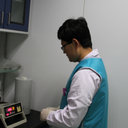Correlation between vestibular neuritis and cerebrovascular risk factors.
Parole chiave
Astratto
OBJECTIVE
To investigate the relationship between cerebrovascular risk factors, including carotid plaques, and vestibular neuritis (VN).
METHODS
According to the inclusion and exclusion criteria, this retrospective study included 90 VN patients and 74 age- and sex-matched healthy controls from January 2016 to December 2017. All subjects' records of cerebrovascular risk factors, such as age, sex, height, weight, history of hypertension and diabetes mellitus, living habits, serum levels of glucose, lipids, glycosylated haemoglobin (HbA1c), creatinine (CR), albumin (ALB), haemoglobin (HGB); and results of carotid colour Doppler ultrasound, were obtained and compared.
RESULTS
No significant differences in age; sex ratio; body mass index; history of hypertension or diabetes mellitus; or mean serum lipids, glucose, creatinine, haemoglobin or HbA1c were found between patients with VN and healthy controls (all P > 0.05). The mean serum ALB level was significantly lower in VN patients than in healthy controls (40.65 ± 3.77 vs 42.84 ± 4.32, P = 0.001).The prevalence of carotid plaques was significantly higher in VN patients than in healthy controls (36.67% vs. 16.22%, P = 0.003). Regression analyses demonstrated that a high frequency of carotid plaques was associated with VN with an odds ratio of 2.252 (95% CI 1.165-5.458, P = 0.019).
CONCLUSIONS
A high frequency of carotid plaques may be a risk factor for VN.


